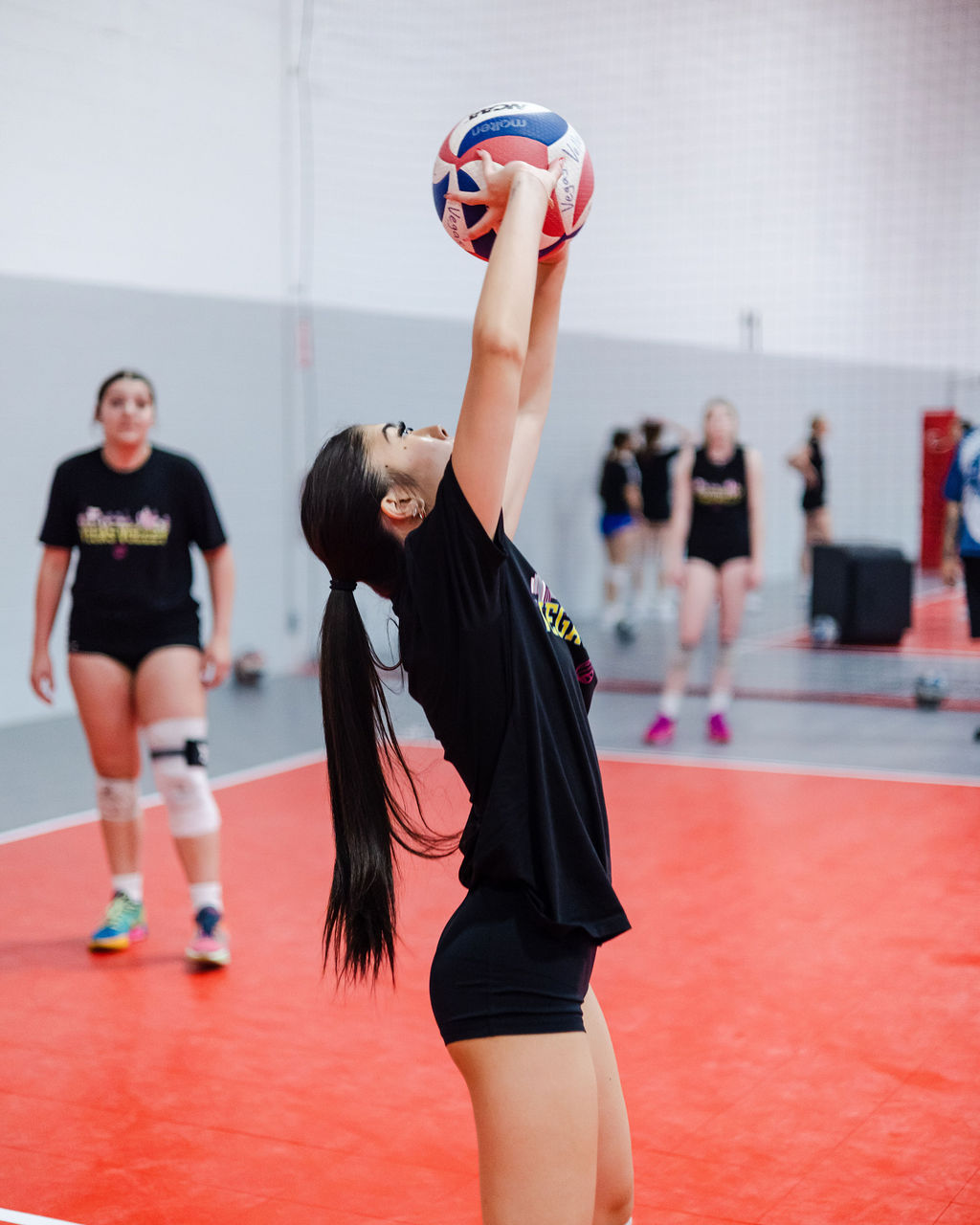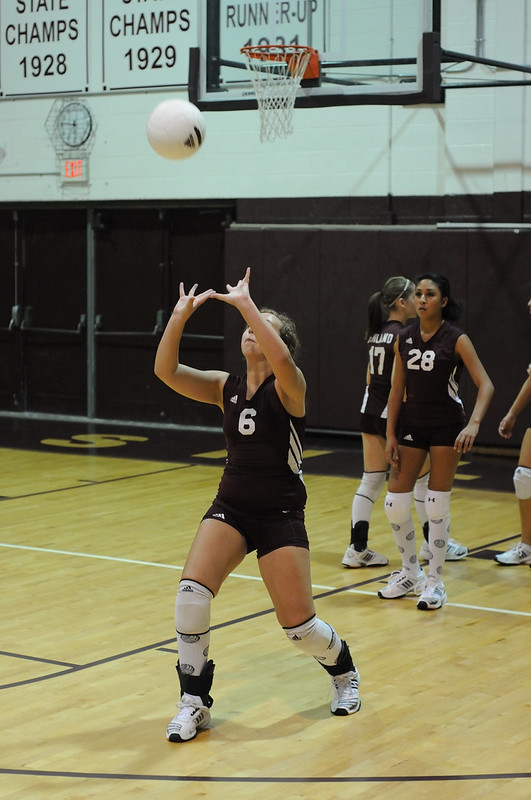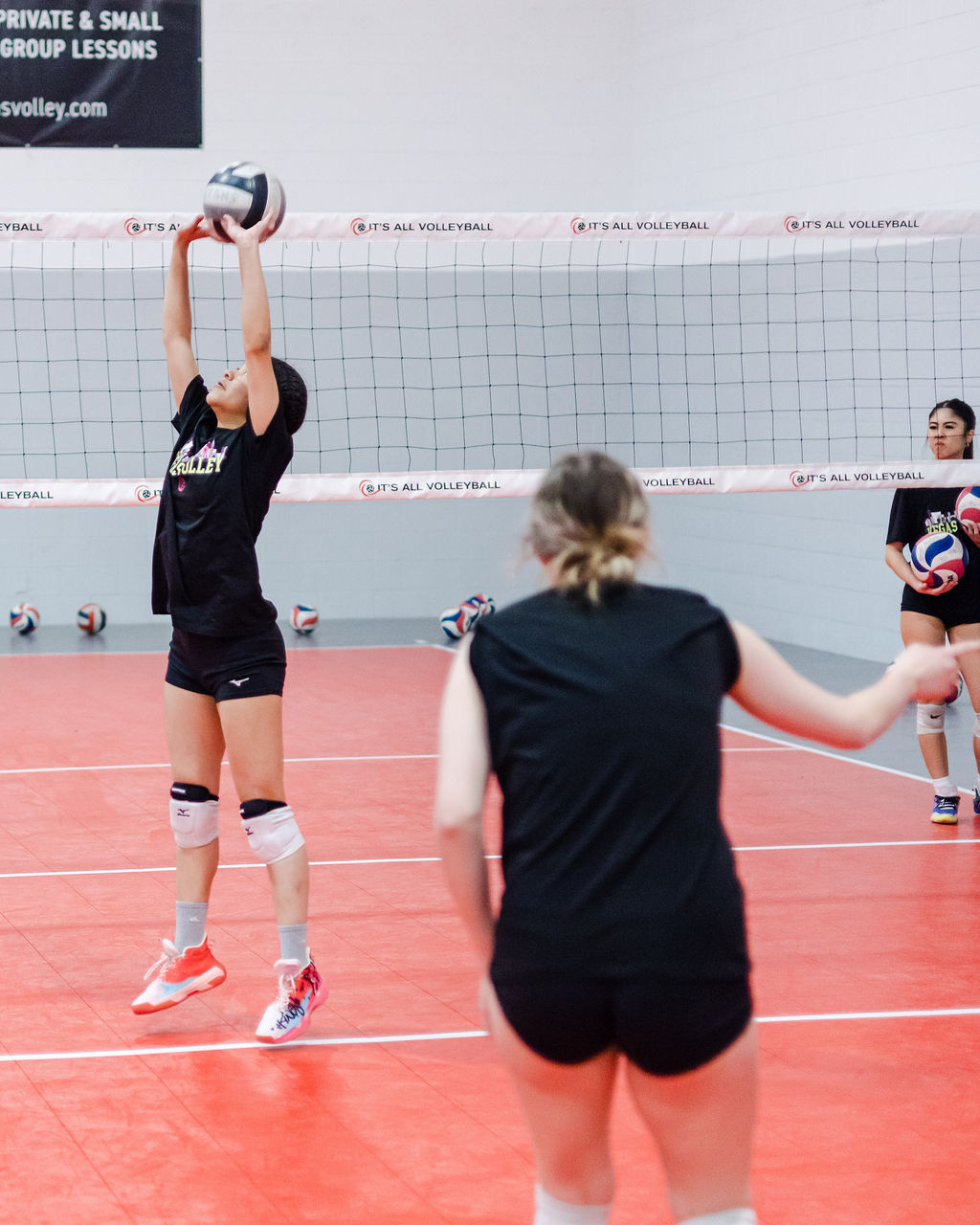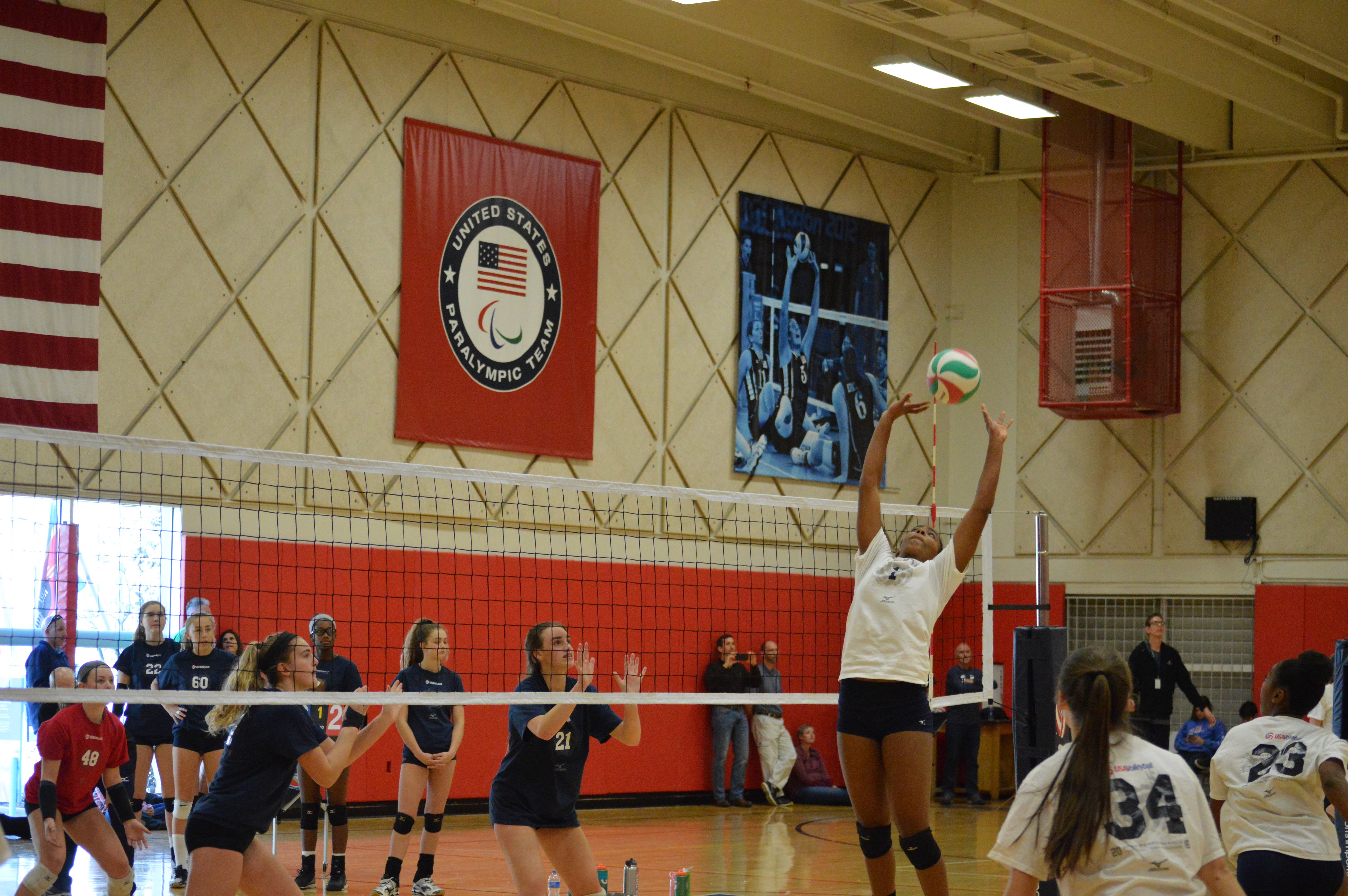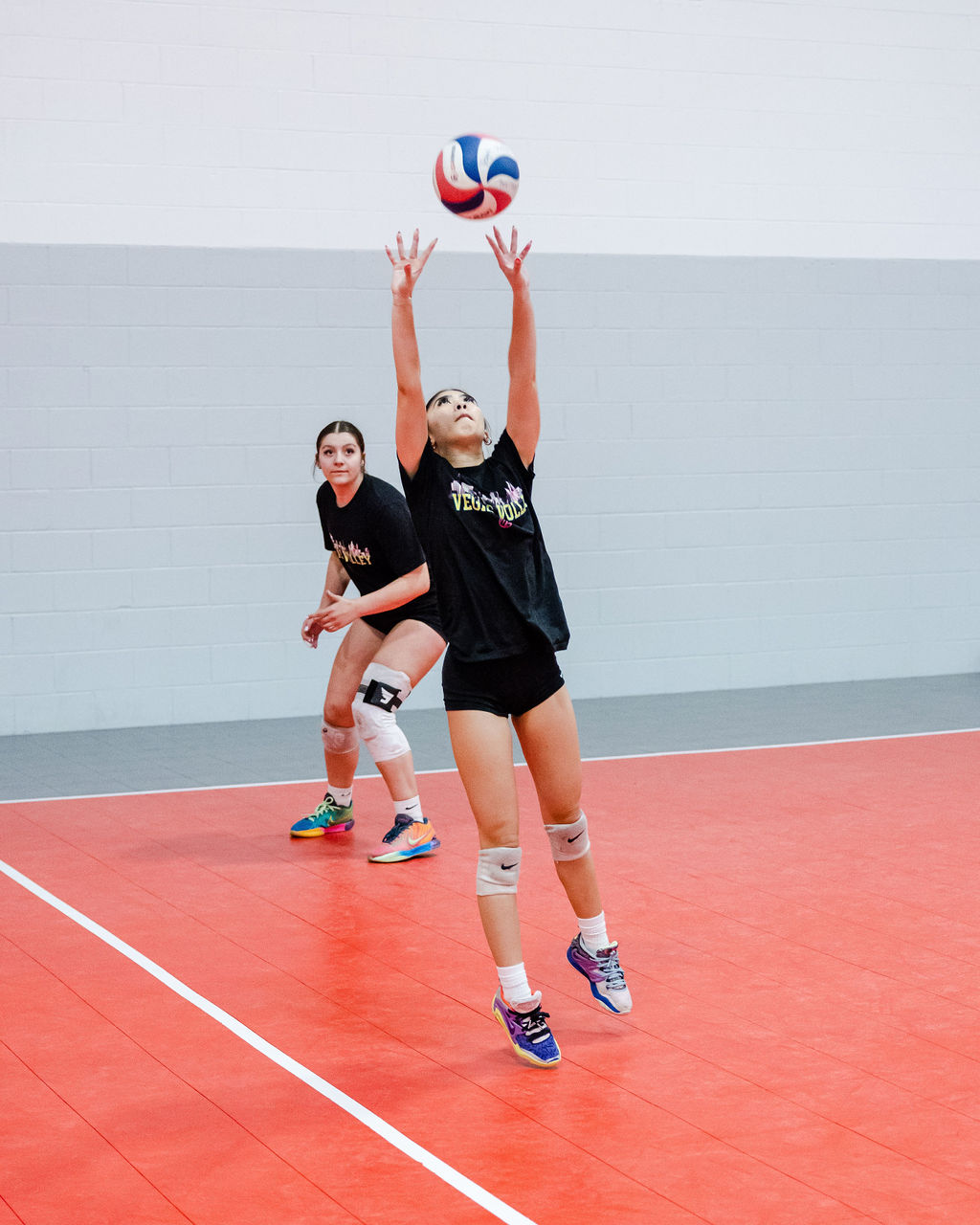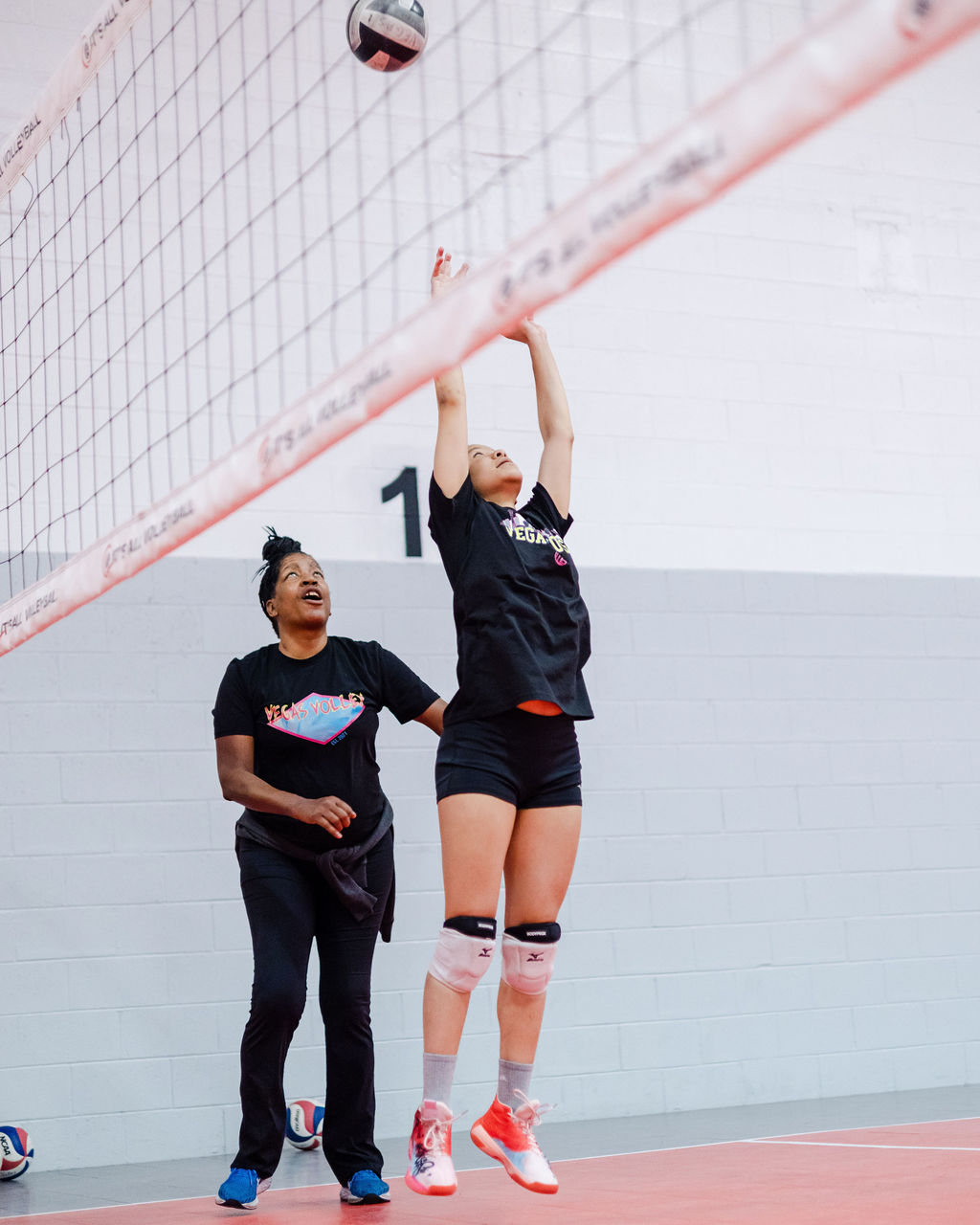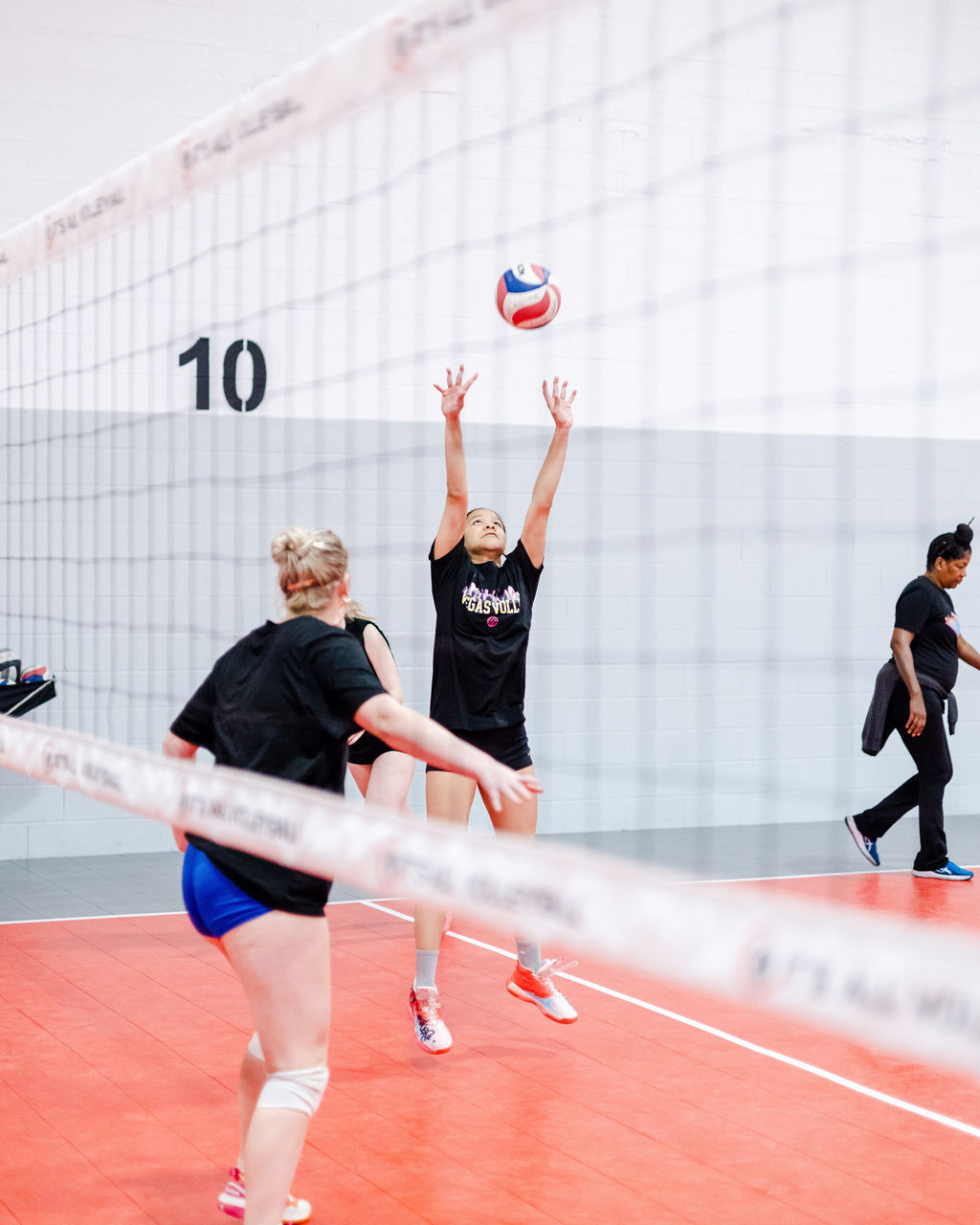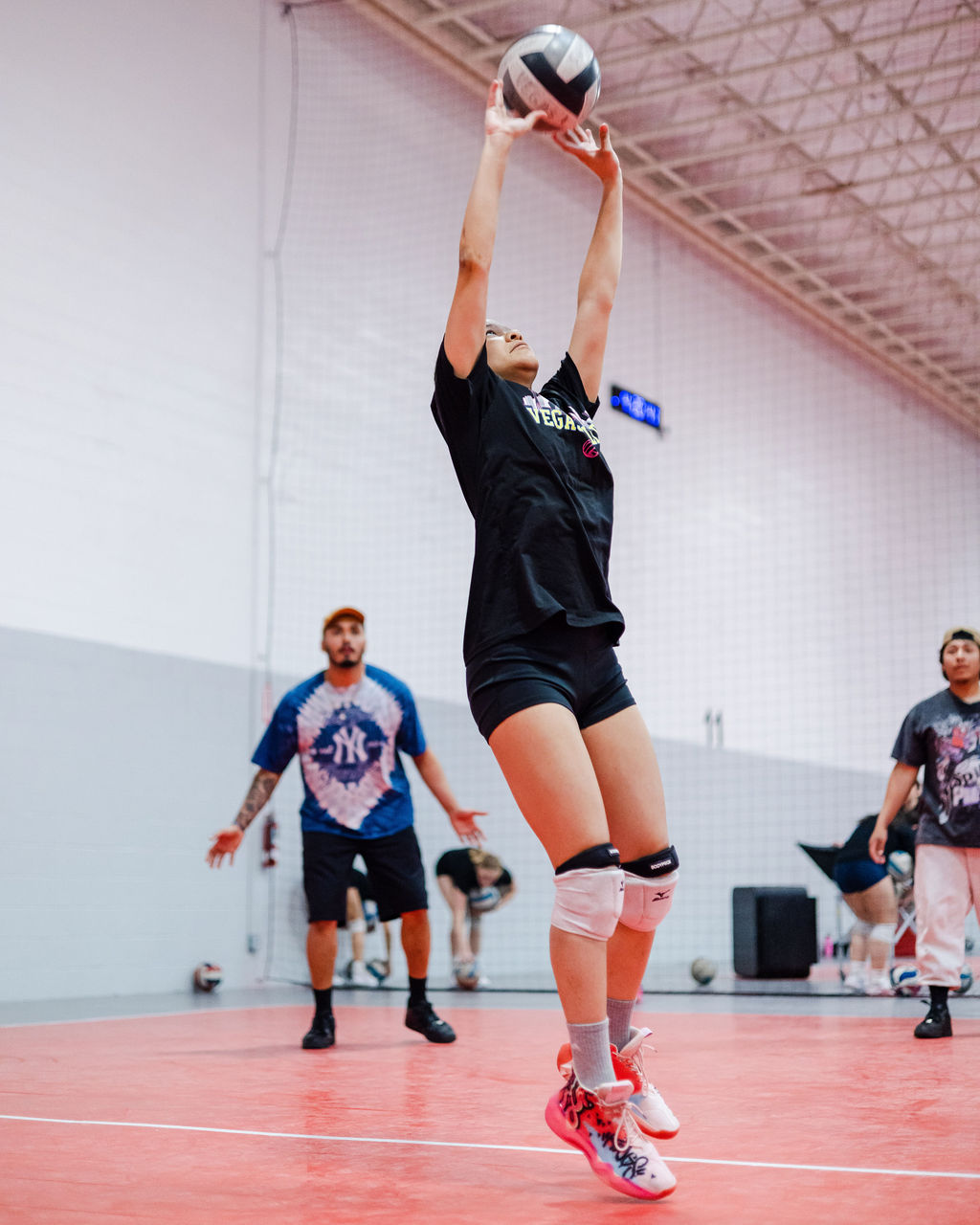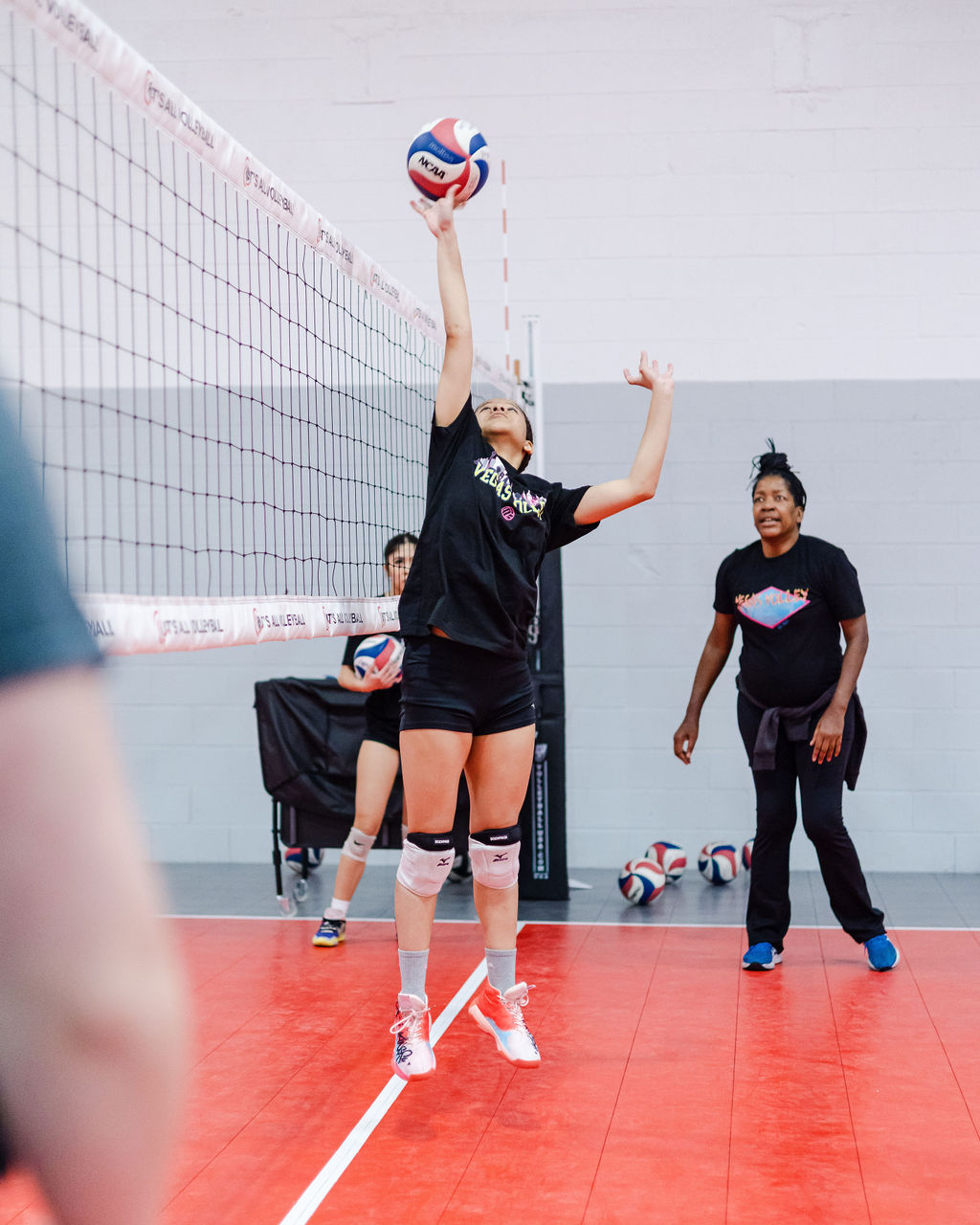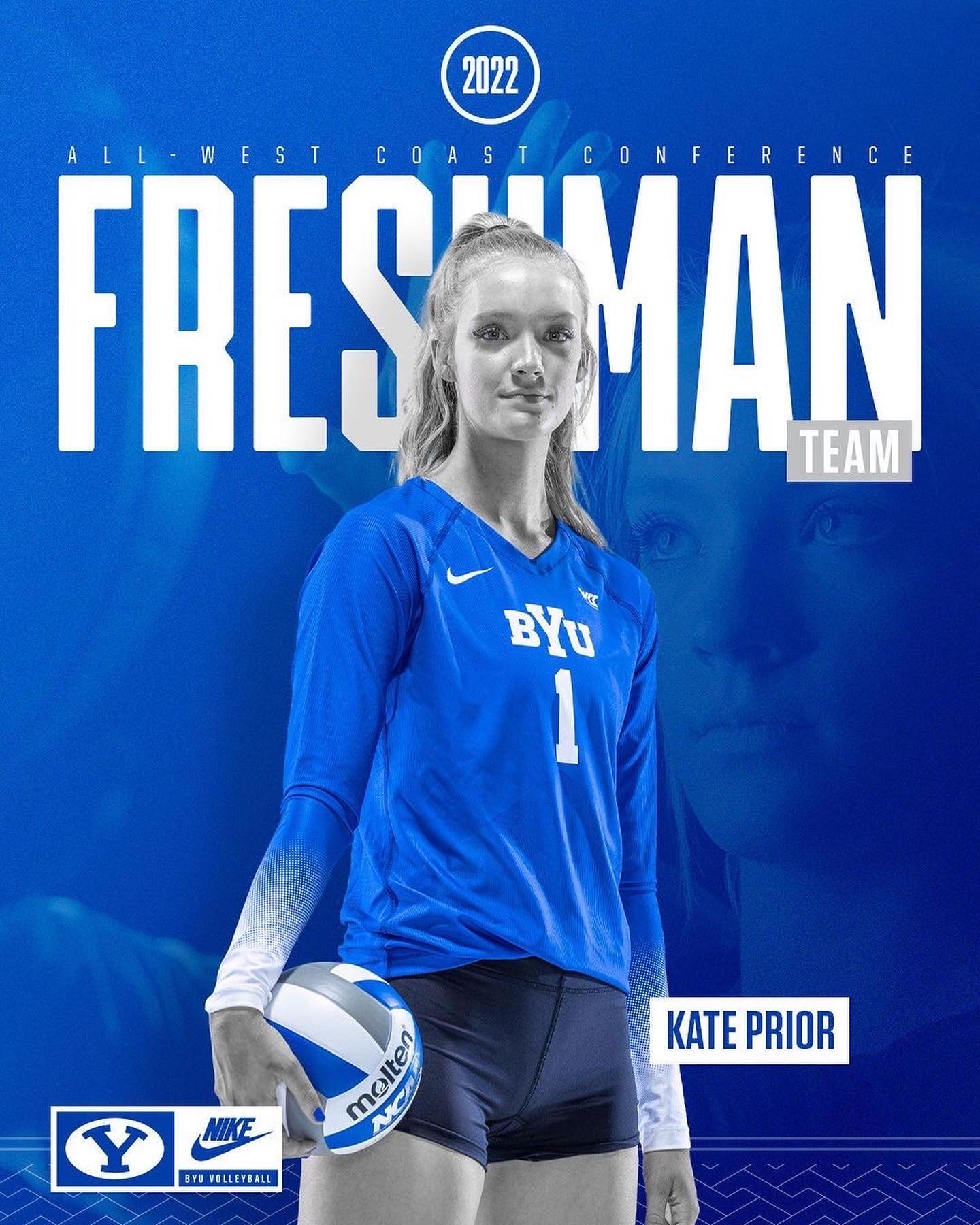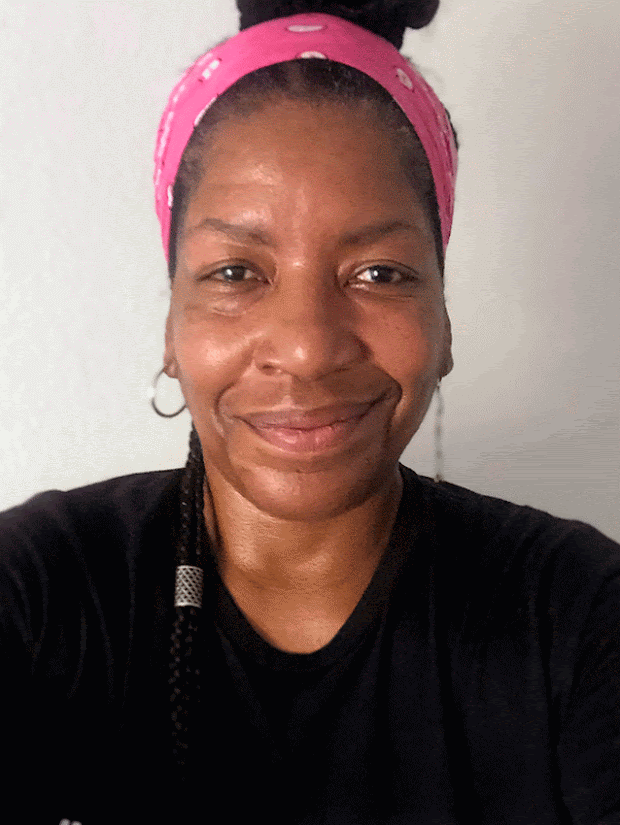- Improve Your Volleyball with Coach April
- Questions for Volleyball Players
- What Is A Setter In Volleyball FAQs
 Dear Volleyball Mom,
Do You Know What Sets My Private Volleyball Training Apart From Anyone In Vegas?
I invite You to read what my private volleyball training mission says before considering hiring me as a private volleyball coach because I'm not available for everyone.
Dear Volleyball Mom,
Do You Know What Sets My Private Volleyball Training Apart From Anyone In Vegas?
I invite You to read what my private volleyball training mission says before considering hiring me as a private volleyball coach because I'm not available for everyone.What Is A Setter In Volleyball? My Setting Guide With Answers To FAQs
Learn what is a setter in volleyball, from essential skills to winning strategies I give answers to setting questions and practical tips to improve your game.
What Is A Setter In Volleyball?
My Setting Guide With Answers To FAQs
The setter in volleyball is often called the quarterback of the team - they're the playmaker who runs the offense and touches the ball on nearly every play.
Think of them as the team's offensive coordinator, responsible for turning less-than-perfect passes into scoring opportunities for their hitters.
A setter's primary job is to
- be the second player to contact the ball during a rally (after their passer in serve receive has passed the ball to them, close to the net, having made the first contact after the opposing team has served the ball into their court)
- re-direct the ball using the overhead setting technique
- to the zone of one of their 3 or 4 eligible front or back row hitters in order for their attackers to score points.
Great setters combine technical skills, tactical awareness, and leadership to make split-second decisions that keep opponents guessing.
What Is A Setter In Volleyball?
The Definition And the Basic Role
The setter plays in position 2 (when in the front row) or position 1 (when in back row) in the rotation and is distinguished by their unique role: they're the second player to touch the ball in most offensive plays.
After a teammate passes the ball (first contact), the setter positions themselves under the ball and delivers a precise set (second contact) to a hitter who attacks (third contact).
Watch Izzy set Piper on the right side during private training with me. Piper working on transitioning off the net fast and then accelerating the last two steps of her spike approach which propels her into the air while swinging high and fast to spike the ball.
What makes the setter position special?
- They handle roughly 30-35% of all ball contacts during a match
- They must read and react to plays faster than any other position
- They're responsible for setting the offensive tempo known as the speed or pace of the set
- They need to maintain constant communication with all teammates
Key Setting Responsibilities:
What You Need to Improve
If you're a setter, you'll have more responsibilities than any other player on the court.
Let's break down exactly what you need to focus on to excel in this position:
What Is A Setter In Volleyball?
Running the Offense
The most common volleyball offense strategies set to the left side: The "Hut" - a medium high/medium speed rainbow shaped set that fails inside the left antenna after peaking 5-6 feet above the net. Or The "Go" - a fast speed/low set with little-to-no-arc that falls inside the left antenna after peaking 3-5 feet above the net. Watch my Collegiate Breakfast Club players in our hitting lines working on reps.
When it comes to running the team offense a setter is responsible for
- Calling offensive plays that keep your team in rhythm
- Making quick decisions about which hitter to use
- Reading and reacting to the opposing team's defensive weaknesses
- Controlling the game's tempo (knowing when to speed up or slow down the pace of sets)
What Is A Setter In Volleyball?
Managing Your Sets
When it comes to managing your sets as a setter you're responsible for
- Delivering consistent, hittable balls to all hitting positions
- Adapting your setting style based on pass quality
- Creating advantages for your hitters against blockers (set the hitter that has the short opposing blocker in front of them)
- Maintaining accuracy even when out of system
What Is A Setter In Volleyball?
Court Awareness and Communication
When it comes to communication and court awareness as a setter you're responsible for
- Constantly scanning the court for information
- Using clear hand signals with your hitters
- Giving and receiving feedback during rallies
- Leading your team through tough situations
What Is A Setter In Volleyball?
A Real Game Example: A Setter's Decision Chain
Watch as I coach during one of my summertime Collegiate Breakfast Club Boot Camp sessions where players come to get reps in before their upcoming season.
When the ball is passed, you'll need to:
1. Quickly read the pass quality
2. Check your hitters' positions
3. Spot the opposing blockers
4. Remember who's hitting well
5. Make your setting decision
6. Execute perfectly
All of this happens in just a few seconds - that's why setting requires both physical skill and mental sharpness.
Can you see the similarities now between a setter and a quarterback in football? Or a setter and a point guard in basketball?
All these positions are run by the players who run the offensive plays for their team.
What Is A Setter In Volleyball?
A Pro Player Tip
The best setters I've coached don't just focus on perfect technique - they master the art of making their hitters look good. Even with an average pass, they find ways to create scoring opportunities.
Essential Setting Skills
Your Path to Success
After coaching countless setters, I've identified the key skills that separate good setters from great ones.
Here's what you need to focus on:
As a setter here's my quick breakdown of the technical skills you should be working on with setting drills on a daily basis:
- Hand Position: Form a consistent triangle with your thumbs and forefingers
- Footwork: Quick, consistent and efficient steps to get under the ball
- Balance: Body control and body part awareness so that you stay squared to your target, even when jump setting
- Contact Point: Connect with the ball at the highest point of your reach with both extended arms and ball-shaped hands at the same time above your forehead
- Follow-through: Direct the ball with your fingertips, not your palms
What Is A Setter In Volleyball:
What're the Physical Requirements?
Don't worry if you're not the tallest player - many excellent setters succeed through:
• Quick lateral movement
• Strong core stability
• Fast reaction time
• Good vertical jump (for blocking)
• Overall body control
What're Some Mental Game Essentials That A Setter In Volleyball Needs To Have?
This is where I think many young setters in training struggle the most, but I can help you develop:
- • Quick decision-making under pressure
- • Court awareness and anticipation
- • Focus during long rallies
- • Confidence after mistakes
- • Leadership presence
What're Some Common Setting Challenges and Solutions?
Problem: Inconsistent sets when passes are tight to the net Solution: Practice setting from different positions, especially while moving forward
Problem: Difficulty reading the defense
Solution: Start by scanning blockers before each play, then gradually increase your scanning speed
Problem: Losing confidence after mistakes
Solution: Develop a quick reset routine - I teach my setters to use the "three-second rule"
Coach April's Corner
Remember: Every great setter started somewhere. Focus on mastering one skill at a time, and don't get discouraged if everything doesn't click immediately. The key is to be consistent, disciplined and purposeful during your at-home drills and during your volleyball team practice.
Setter FAQs (Frequently Asked Questions)
Your Most Common Questions Answered
After years of coaching, these are the questions I hear most often from developing setters.
I've included detailed answers based on real game situations and training experiences.
Setter FAQs (Frequently Asked Questions)
Getting Started as a Setter
Q: What makes a good volleyball setter?
A: From my experience, great setters combine these key elements:
- • Consistent technical skills (hand positioning, footwork)
- • Quick decision-making abilities
- • Strong leadership qualities
- • Excellent court awareness
- • Ability to stay calm under pressure
Most importantly, they have a genuine desire to make their teammates better.
Setter FAQs (Frequently Asked Questions)
Technical Aspects
My tips on How to do wall passing drills...
Volleyball wall passing and wall setting drills can be done daily at home with a goal of at least 250 - 500 reps of various drills to keep your
- passing or setting technique,
- angled platform work,
- ball contacting skills and
- control of the ball.....extremely sharp!
Pick a brick, a specific spot on the wall or mark a big X in chalk on a wall or use a basketball net or backboard ...no matter what you decide to use as your target... anybody walking by.... should be able to see exactly where the spot is that you are aiming for EVERY...single....time .
Do 3 to 5 sets of 100... five feet from the wall ....then side step two feet and repeat. Then step back and repeat.
Complete 300 to 500 passing repetitions
Q: How often should setters practice?
A: Here's the practice schedule I recommend:
- • Daily hand positioning exercises (15-20 minutes)
- • Wall sets (various) for consistency
- Setting drills at home with target 3-6 feet distance
- • Setting drills with teammates when possible
- • Mental preparation and game-situation visualization
Even practicing alone for 20 minutes daily can significantly improve your setting.
Q: What's the most common mistake new setters make?
A: The biggest issue I see is focusing too much on hand technique while neglecting footwork. Here's what to watch for:
- • Getting to the ball late
- • Poor body positioning
- • Setting off-balance
- • Inconsistent ball placement
Fix: Start with footwork drills before adding the ball.
Setter FAQs (Frequently Asked Questions)
Game Situations
Q: How do setters handle bad passes?
A: This is where great setters really shine. Here's my strategy:
1. Stay calm - panic leads to poor decisions
2. Move quickly but controlled
3. Focus on making the ball hittable
4. When in doubt, set high and outside
5. Communicate with your hitters about what's coming
Training Tips: Develop Your Setting Skills Like a Pro
Adlai sets All-West Coast Conference opposite hitter for BYU and Boulder City High school 2x -3A state champion Kate Prior during private volleyball coaching sessions.
Kate Prior is a 3 year private client of mine for the last few years of her high school volleyball career.
As a coach, I've developed these proven training methods to help setters improve quickly. Here's your roadmap to better setting:
Daily Setting Routine (15-20 Minutes)
1. Wall Sets (5-7 minutes)
• Start your arm's distance from the wall feet from wall
• Focus on consistent hand position above your forehead
• Maintain proper posture
• Count 3 sets of 50 perfect sets in different positions: front sets, side sets each side, rainbow wipes, one hand sets each hand
2. Footwork Drills (5 minutes)
• Shuffle steps between cones
• Forward-backward transitions
• Quick-turn movements
• Sprint-to-set positions
3. Hand Strengthening (5 minutes)
- • Finger pushups
- • Ball handling exercises
- • Wrist flexibility work
- • Triangle position hold
Advanced Training Techniques
Solo Practice Ideas:
- • Set to targets on the wall to a very specific spot that's the same height that's 2-4 feet above the "imaginary" net
- • Practice setting from different positions to prep for out-of-system passes
- • Record yourself to check form
- • Use setting machines if available
Watch as I work with three of my young clients working on all three types of sets, front setting, side setting and back setting in one of my volleyball setting drills. We're also working on ball control, target practice consistency and building upper body strength.
Partner Practice:
• Alternating sets
• Movement patterns
• Game-like scenarios
• Pressure situations
This is my specialty I love creating drills that incorporate all of the above scenarios with two partners, groups of three, or five vs five game like situations.
Check out some of my club/client/college setting practice videos below.
College volleyball setters in game like situation during one of my College Breakfast club practices.
Check out this pepper drill option that you can do at home with a partner or against a wall. I love changing pepper options so players can work on controlling the ball. In this drill you'd dig to yourself, set your self a two ball (a second tempo set) with one hand and then again with the other hand before hitting a controlled ball to your partner who repeats the sequence.
Breakfast Club for College Players Liam sets BYU opposite hitter Kate Prior for a kill
What Is A Setter In Volleyball:
Mental Training Tips
• Visualize perfect sets daily
• Watch high-level setters
• Keep a setting journal
• Practice decision-making scenarios
What Is A Setter In Volleyball?
Common Training Mistakes To Avoid
I stand by doing the "dirty" "boring" work at home by yourself or in practice settings before getting to the scrimmages and playing exercises.
Doing reps on reps on reps is your goal doing each setting repetition repeatedly and making sure that you only count the ones that go to the intended target using the correct setting technique is what you should be doing both on your own or in practice.
The results are easily seen when scrimmages and game like situations are done at higher speeds.
✗ Training only with perfect passes
✗ Ignoring footwork development
✗ Practicing without purpose
✗ Skipping basic drills
What Is A Setter In Volleyball? Your Next Steps
- Start with the basic training routine outlined above
- Record yourself setting to analyze your form. I encourage my clients to use their phone to record our private training sessions so they can look back at the things we did and they can hear my voice in practice over and over again on their own when they're at home.
- Practice reading game situations
- Work on communication with your hitters
- Keep track of your progress
What Is A Setter In Volleyball?
Things To Remember
The best setters aren't always the tallest or most athletic players - they're the ones who master the fundamentals and never stop learning. Your success as a setter will come from dedication, smart practice, and a willingness to lead your team.
Do You Still Have Questions About Volleyball Setting?
Feel free to check out my other volleyball guides covering:
• Advanced setting techniques
• Position-specific setting drills
• Game strategy tips
• Mental preparation
Keep working hard, stay focused on improvement, and most importantly, enjoy the journey of becoming the setter your team needs.
Do You Follow Me on Pinterest?
Follow me on Pinterest Volleybragswag to improve your game even faster!
I share alot of individual, partner and easy-to-do volleyball serving drills we do in class with my followers.
Many of these volleyball practice drills you can do at home by yourself or try at your next practice with your teammates.
If you're a B team or JV player trying to make varsity next year...your goal should be to complete 1000 reps a day of at least three of the basic skills on your own...volleyball passing, serving and setting should be at the top of the list.
From Lady Vol to Legend: Coach April Produces Powerful Passionate Players...is that you?
What Are You Looking For?
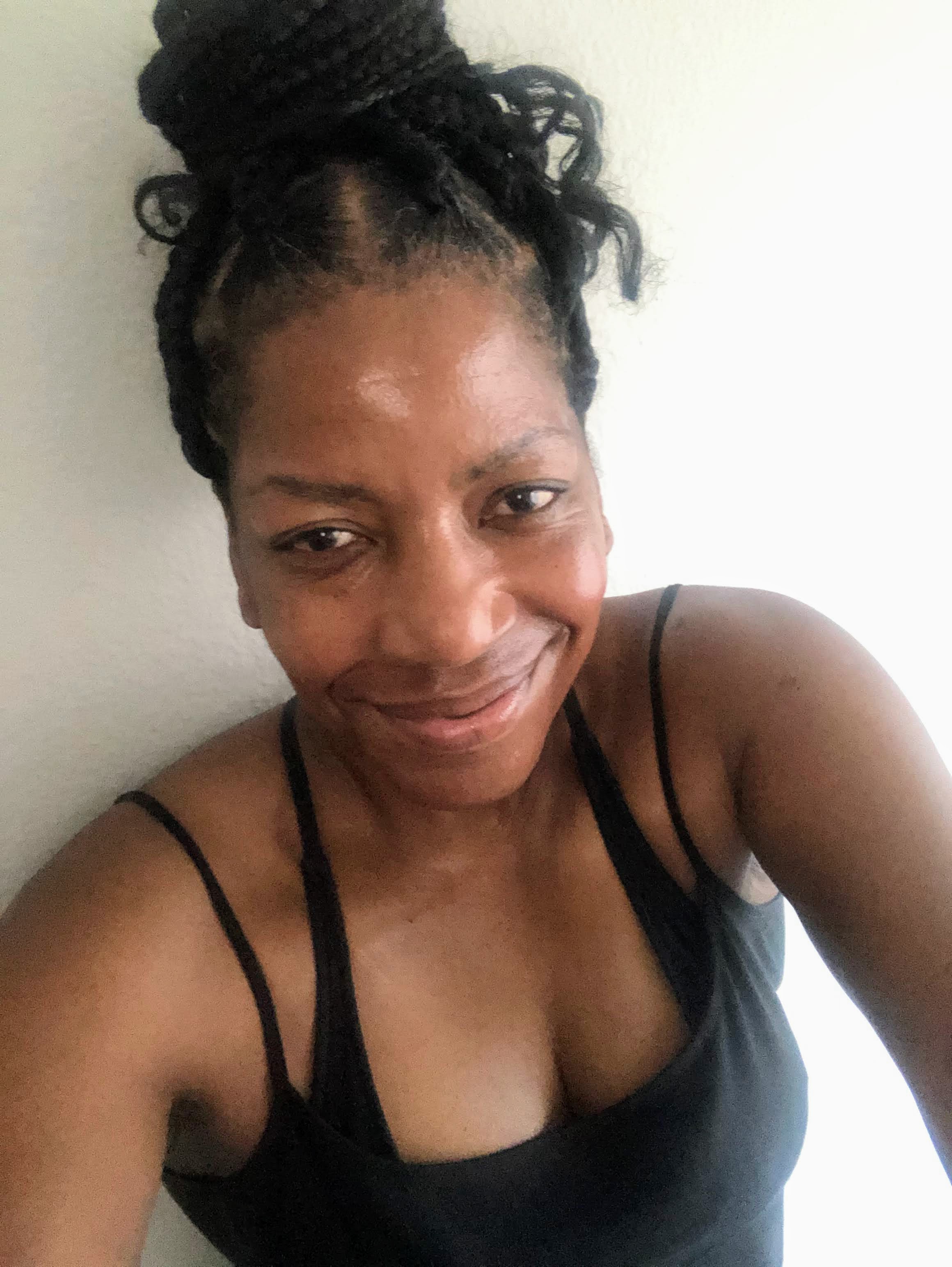
Hi there!
Thanks for stopping by. Hope you learned something today that will help you reach your volleyball goals.
Be sure to subscribe to my email newsletter so you can learn more each week!
Stay strong! Stay motivated!
-Coach April

SUSCRIBE
to my email newsletter below!
Vegas Volleyball's Unsung Heroes: Celebrating Moms with Peace Love Volleyball Shirts
Ready to energize your volleyball mom journey?
Subscribe to my 'Producing Powerful Passionate Peaceful Players' email list above on ImproveYourVolley.com.
You'll receive energy-boosting tips, exclusive insights from me, Coach April Chapple on maintaining momentum in volleyball.
Let's power up the Vegas volleyball scene together!
Recent Articles
-
Coach April's Peace Love Volleyball Phrases For T-Shirts Honor Moms
Apr 13, 25 03:49 PM
Whether on the court or in everyday life, April Chapple's volleyball phrases for t-shirts are serving inspiration for players and moms, one message at a time. -
What Is A Setter In Volleyball? My Setting Guide With Answers To FAQs
Apr 13, 25 12:36 AM
Learn what a volleyball setter is from a champion coach. Get expert insights, training tips, and proven strategies for volleyball's most strategic position. -
Setter Position in Volleyball: My Expert Guide & Setting Training Tips
Apr 12, 25 04:11 AM
Learn the setter position in volleyball from an expert coach. Master essential techniques, court positioning, and winning strategies to become a great setter.
